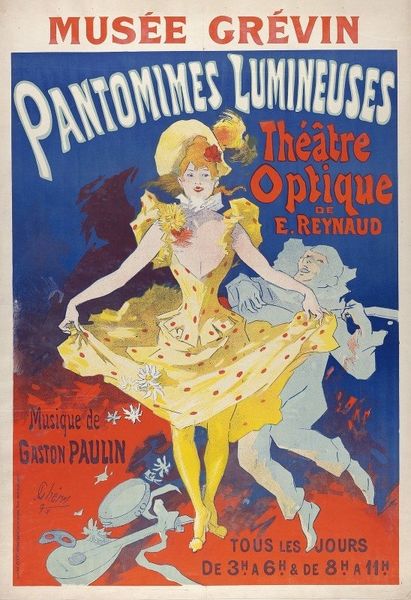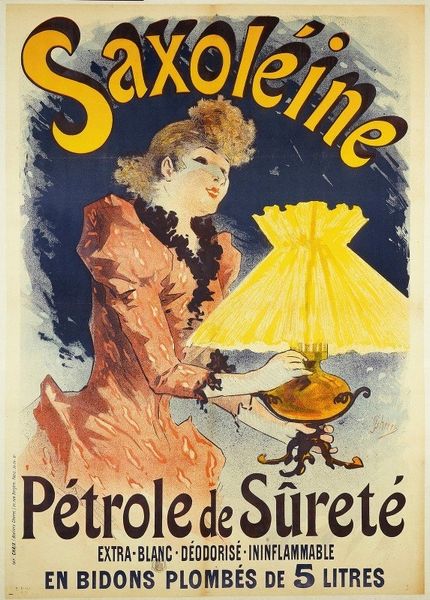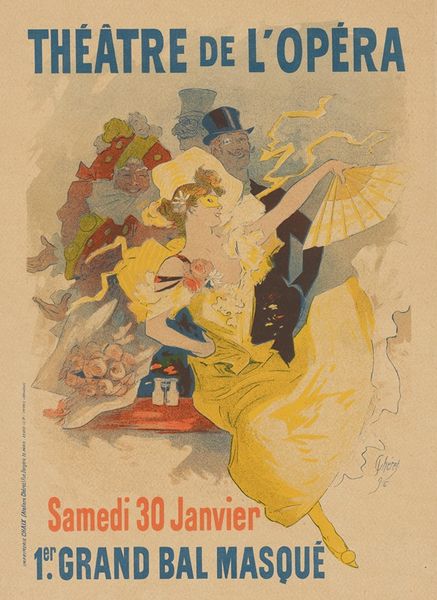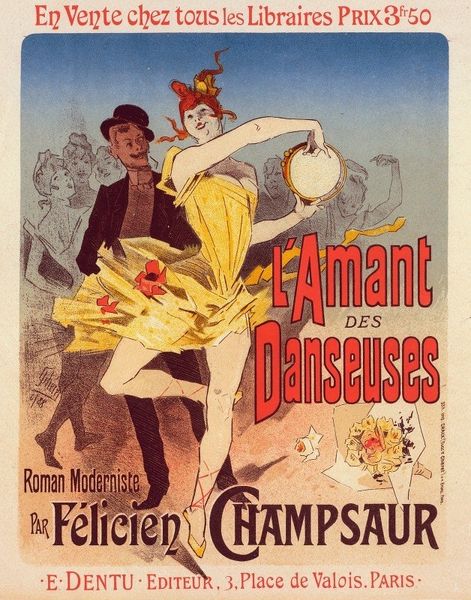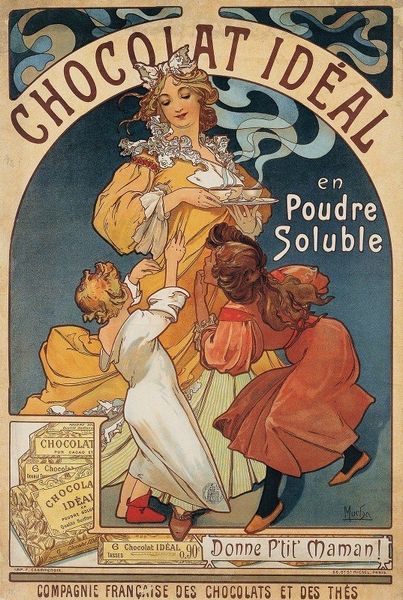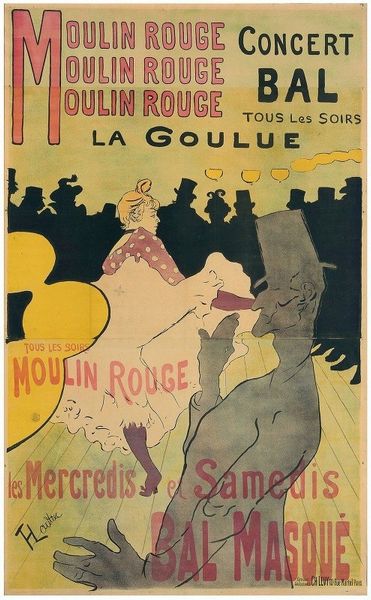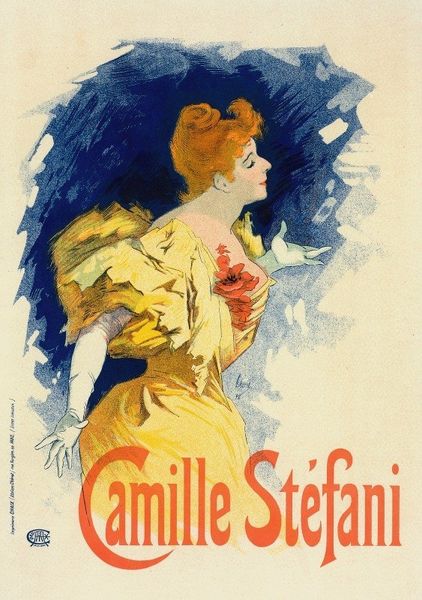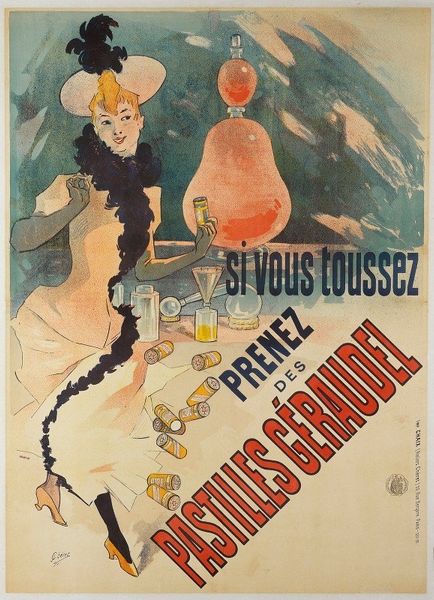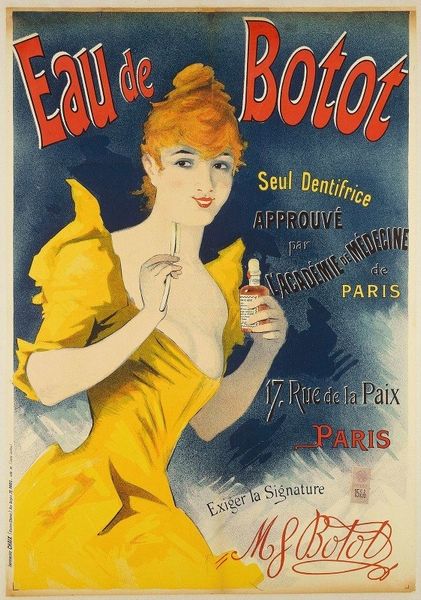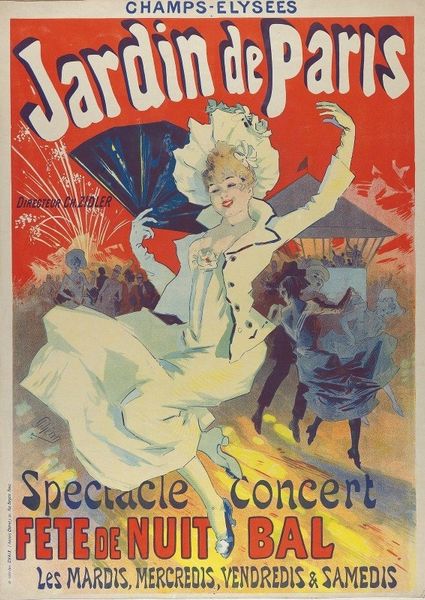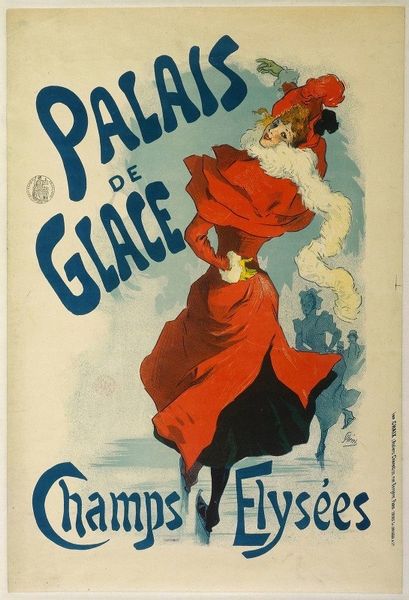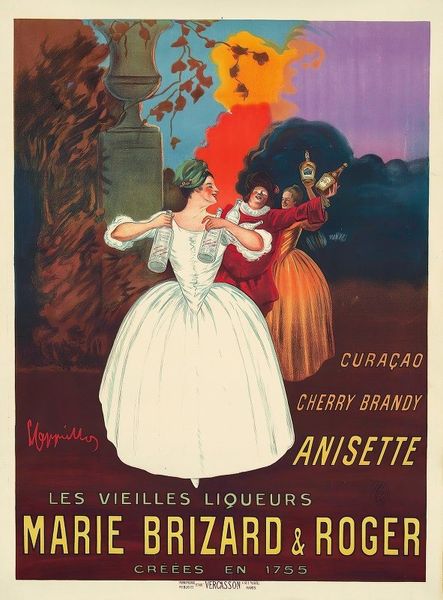
lithograph, poster
#
art-nouveau
#
lithograph
#
figuration
#
genre-painting
#
poster
Copyright: Public Domain: Artvee
Curator: Let’s consider this lithograph, “Casino de Paris. Camille Stéfani. Concert-spectacle bal," likely created by Jules Chéret between 1836 and 1932. The image vibrates with fin-de-siècle optimism! Editor: It strikes me as vibrant—almost dizzying, actually—with all those swirling figures. Is this a poster announcing an event? Curator: Precisely! Chéret innovated the poster format, drawing on the aesthetics of Art Nouveau to transform the streets into accessible art galleries. Think of this lithograph as an announcement of Parisian nightlife; it uses the body, especially the female form, as its primary communicative tool. Editor: The focus on figuration emphasizes a spectacle of bodies: dancers, musicians, performers. Was Chéret involved with the labor aspect of these performances as well? The means of distribution of these posters would imply a wide-reaching labor operation. Curator: The Casino de Paris itself occupied a unique socio-economic position as a place for spectacles where women occupied both sides of the stage, working as both dancers and performers, while men watched from the audience. We must consider the ways the construction of entertainment for a primarily male gaze relies on a system that depends on women in order to explore gender dynamics of the era. Editor: Yes! Thinking about this work within the history of labor movements—considering how labor in print shops became quite contentious across France with strikes regarding the use of different stones for printing—offers crucial context. This focus on the concert spectacle needs that other focus on industrial infrastructure to show how labor and capital come into tension in a society changing so much during industrial modernity. Curator: We can read so much into these playful posters. Not only did Chéret impact consumer culture by influencing visual languages through this advertisement poster; but these posters in their creation and performance reflect underlying social relations that are visible when we focus on women and on the lithographic printing trade itself. Editor: This is why it is also worth studying lithography as an industrial art form that transformed everyday landscapes; the work, the poster, exists only as a trace of social histories in material, labor, and political struggle. Curator: Exactly! Hopefully, this provides some interpretive layers for our audience. Editor: It absolutely should.
Comments
No comments
Be the first to comment and join the conversation on the ultimate creative platform.
